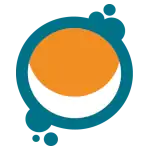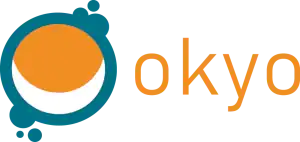The spirit and the history of Videocataract and live surgery in Italy
Lucio Buratto, world-renowned Ophthalmologist, highly specialized in refractive and cataract surgery.
The Videocataract conference was first organized in 1980 under a different name; it was held in Spring and not in October as has been the tradition for many years. The original event was organized with the same spirit, drive and principles that are still its lifeblood today: to present live surgery in real time to a viewing ophthalmic public. It was hugely innovative at that time, as the only way surgeons could observe surgical procedures was to travel in person as a guest to the operating room of some generous colleague who was gifted with an open mind. Back then, only a select group of surgeons were proficient and performed this type of surgery and they did not really want to share their techniques or teach them to the young and not-so-young specialists. In addition to modernizing surgery and the profession in Italy, a scientific event such as this served to drive Italian surgeons to imitate their renowned international colleagues, improve their surgery, and consequently improve the treatment of the patients.
The past and present of VCR
Videocataract (with the advent of refractive surgery, it was renamed Videocataractrefractive, VCR ) and the other conferences I organized have always provided window on the latest and most modern surgery techniques performed by the most illustrious international surgeons and showcased the latest developments in surgery and equipment to Italian eye surgeons. However, it also served to encourage young specialists to muster the necessary courage and broaden their horizons to include progress and innovation and allow them break free from the constraints of the traditions. There is no other conference on the international scenario – organized by an independent specialist as opposed to an ophthalmology organization – that boasts the tradition, the attendance and the ability to present innovation as successfully as VCR.
VCR is a ‘classic’ of the Italian scientific world, it is the oldest and enjoys a large participation, second only to the conference organized by SOI (Italian Ophthalmology Society).
The innovations presented at VCR
VCR has presented almost all of the innovative developments in the world of cataract surgery: phacoemulsification and the first modern IOLs for the posterior chamber, the first viscoelastic material Healon, the Yag Laser. And later the various models of the IOL that gradually appeared on the market, the new phacoemulsifiers, the new microscopes, the laser and femtolaser machines for treating cataracts.
Most importantly, Videocataract pioneered live surgery. I am proud to have been the first to have recognized the enormous potential of live surgery and to have exploited it as a powerful teaching aid in tandem with a means for professional consolidation. While not being the first to present live surgery in Italy, I was first to have systematically defined its use. Internationally, there were rare episodes of surgeons, assisted by one of the ophthalmic companies, who organized or are organizing sporadic live events. However, no-one but me has dedicated so much time and energy to such a continuous and determined journey.
The role of live surgery
At the very outset, I demonstrated that live surgery, projected onto the big screen, was a breakthrough in its own right, something completely innovative for observers and operating surgeons alike. It was a watershed moment for the surgeons: previously the surgeon operated peacefully in his operating room; but in live surgery, nothing is hidden and if complications appear, the surgeon has to keep a level head and deal with it, there and then. Those observing live sessions finally see what surgery really is, in great detail, in real time on a big screen!
For the first live event held in Milan’s Clinica San Pio X in 1980 with just a handful of colleagues in attendance, I invited Ulrich Dardenne, full Professor with the Department of Ophthalmology, Berlin and Egidio da Fiume, Chief Consultant in Ravenna. The experience was extremely positive and I decided to move forward with this project. Six months later, I organized a second event and invited Steve Shearing who invented the first IOL for the posterior chamber. Then in 1982, I organized two live events and was joined by two illustrious international surgeons who performed the procedures. During the first event, I welcomed Ian Worst who was not using phacoemulsification at that time but who was closer to the type of surgery practised in Italy at that time. One of the objectives was to satisfy the requirements of the surgeons practising traditional surgery, and also to demonstrate how wonderful this new type of surgery was with the phaco and the PC-IOL. At the second event, I had the honor of having Charles Kelman as my guest. He invented phacoemulsification and is renowned as a man of enormous talent, enormous culture and charm. Live surgery as a teaching method gradually spread through the international circles, thanks to my personal commitment. It gave new and practical input to how surgery was taught. Now this method is commonplace across the scientific world, and is used in the more important American, European and Asian conferences.

